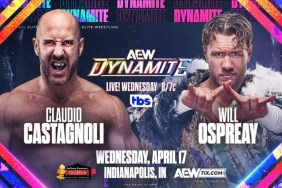The rights of workers are among the most defended and guarded in todays legal system. An extensive framework of legislation is continually undergoing development and refinement in order to ensure that workers are sheltered from the potential abuse of power by their employers. The working conditions of previous centuries are looked upon as barbaric and primitive, those not in a position of control being exploited by those who are. In some instances to the extent of slavery. Fortunately this is no longer the case, each individual employee or industry can be represented by a union and covered by codified safeguards. That is, only for those in conventional employment. To this day, various occupations that don’t slot neatly into a category or pigeonhole are vulnerable to the same exploitation of the past that is now seen as Neanderthal. Professional wrestling is one such occupation.
On the exterior, wrestling is portrayed as a form of entertainment whereby all results are preconceived and the competitors are little more than athletic performers. In reality it goes far deeper than sheer entertainment, becoming a sport without the honest competitive elements, yet still a physical contest. Because of this straddling between genres, professional wrestlers have been left vulnerable, not entirely qualifying for the benefits of employees or sportsmen. The widespread skepticism of those who pass off wrestling as steroid fueled fake grappling further encourages this imbalance in basic rights. The combination of ambiguous definition and mainstream disrespect has meant that the industry has been overlooked when legal protection and unionism were being put in place.
Protection for workers is essential in ensuring that employees are being treated equally, work in humane conditions, and are paid sufficiently for their labour so as to support a family and have an acceptable standard of living. Without it, workers must accept whatever wages they are offered, if they don’t someone else would, leaving them without employment and subsequently an income to support their family. Through an economic lens, this is an ideal situation, where competition is promoted and finances are being used as efficiently as possible. In terms of wrestling it works almost identically. The individual contract-based system has meant that talent (who, in essence, are dispensable and replaceable in the eyes of promoters) compete with one another in order to provide the promotion owners with an incentive to offer them a contract, be it a lesser salary or an increased workload. Of most concern is the increased workload, particularly due to the amplified physicality of the sport, which over time has lead to permanent injury, drug abuse, and family breakdown. All three of which are main contributors to the shortened lifespan of the average professional wrestler.
In the beginning, professional wrestling functioned on a territorial basis, each territory having a set promotion and roster, on occasion inter-territorial bouts were scheduled. This sub-division of the sport meant that each promotion catered to a limited audience governed by geography, an audience who would watch wrestling twice a week maximum. And so, promotions would only organize two shows a week, leaving sufficient downtime in between. Furthermore, territorial restraints meant that long distance traveling was rare. During this time industry was developing and worker’s rights were being created and refined while the rights of wrestlers remained unchanged. This occurred for two reasons, firstly, working on only two nights meant that the majority of performers had full time jobs, professional wrestling being merely a part time hobby to them and not relevant to labour market reform and protection. Secondly, kayfabe was in full force, disguising what was an occupation for some, as little more than an extension of boxing or another physical pursuit. Together, this meant that the wrestlers felt no need for protection and outsiders saw no reason for it, the territory structure creating a self-sustaining ecosystem of sorts.
Over a quarter of a century exposes this oversight as the main source of the distress among professional wrestlers. As territory barriers became obsolete, through both television and McMahon’s revolutionary nationwide promotion, the protection they offered so too became flawed. The current situation is the culmination of small changes and alterations to the original recipe, where each week evidence mounts that professional wrestlers are the least protected and represented workers in the country, and their well being is the victim. In the last five years seemingly every week a new star passes away or is charged with drug offences, exhibiting the long term byproducts of the impossible lifestyle that they had to lead in order to remain employed.
The eighties marked an increase in traveling for performers as the WWF at the time was attempting to satisfy their national audience, the road opened no-strings opportunities and invited a dependency on drugs in order for competitors’ bodies to manage the excessive strain. Furthermore, although contract values rose exponentially, there was no program created to deal with the heightened hazards of the road.
Into the 90s, a forced crackdown on steroids gave the illusion of the administration acknowledging the growing drug abuse brought about the schedule, but in practice it was little more than lip service. The Monday night wars were the final straw, the monopoly of the business by the two major promotions meant that there was an unhealthy level of competition between wrestlers on a contractual level, but even more so in terms of schedule. As each company found ways to one-up the other, the competitors had no choice but to perform six days a week on various house and televised shows. This has since cooled down due to the brand split, which is as practical as it is storyline, but despite individual redemption, the aftershocks of the hard living in the preceding years has come to a horrific punch line, deaths. Less poignant but equally as important, the lack of workplace protection is exposing workers to unfair dismissals, where on a monthly basis the WWE are discarding established stars, almost on a whim, including those which they created themselves. In a conventional workplace arrangement such managerial behaviour would be seen as malpractice.
On a superficial level this is no one’s problem but the wrestlers themselves, no one force feeds them painkillers, no one is keeping their families from them, as long as they perform exceptionally week in week out, no problem exists. This is true, but as we are seeing, the lifestyle has begun to catch up with the performers, even those who seem to be in their prime. Without rectification news boards will more frequently be displaying black banners emblazoned with the face of someone’s favourite wrestler
The truly depressing aspect of this situation is that the solution is not only simple but easily achieved. A union (a popular suggestion by professional wrestlers who have idenitified the nature of the problem) would prevent performers from being at the will of the one dominant promotion and unfair contract agreements. More importantly, a union would increase the responsibility of employers (the promoters) over what their employees engage in during transit between jobs, or further still, obligate them to provide transport and accommodation out of their own pockets. A union could also adjust the way in which firing happens, legally compelling the major promotions to give notice and reasoning beyond ‘we have nothing for you’. The recent restrictions on dress code and character retention in between shows is almost illegal in the sense that the WWE can govern how the star dresses out of the ring, yet will renege any responsibility in regards to their personal habits and addictions. This imbalance is permissible in the absence of a union, but would be heavily opposed if one were to be formed.
The only detriment to the promoters would be increased spending within the federation, leading to a reduction in the copious profits, but unfortunately, a union could actually disadvantage the wrestlers themselves. Arguments can be made that jobbers contribute just as much to the company as the topbilling stars, leading to a lessening in the salary of high card talent. Such a movement would reduce the incentive for stars to perform at an exemplary level, as they can receive a similar income by losing on Velocity. Further still, the romanticized operation of ‘paying dues’ would no longer be able to occur, depriving the industry of its traditional honour system in which every star must pass before receiving the spotlight. In reality, a union, which is an inevitable step in the development of the sport, would lead to the very culture of the industry diminishing drastically. Such a decision between personal safety and the historical lineage of the sport will never be clear-cut or unanimous.
As fans, we would also become victims of a union. The improvement of working conditions would lead to a curbing of house shows, weekly programs and international tours. Opportunities for fans to interact with the stars would become few and far between, as well as less exposure to the champions, particularly in-ring competition. But such sacrifices shade in comparison to the alternative. Deep down each fan knows that professional wrestling as a whole is on borrowed time, not because fan numbers will drop, not because the population will grow out of it, but because the stars themselves are on borrowed time. It used to only be retired stars that passed prematurely, but with each passing, the ages are getting younger and younger, moving towards a permanent drought of main event talent and midcard talent alike.
The current reactive approach to this deep seeded disease will only magnify and encourage the behaviour, and it seems as though professional wrestling has passed the point where a union (or alternate protection) can be established. The industry is operating in a comfort zone, money, stars and fans are forever being produced, and so, in the eyes of the industry there is no problem. If it ain’t broke, why fix it? But until the problem is actually acknowledged the vicious cycle will continue eternally, until the day where there are no longer enough capable athletes to fill a card.
If you’d like to write to me, my email is TheButchershopColumn@hotmail.com, all mail is appreciated.
Over and Out
Jim “The Butcher” Browne








